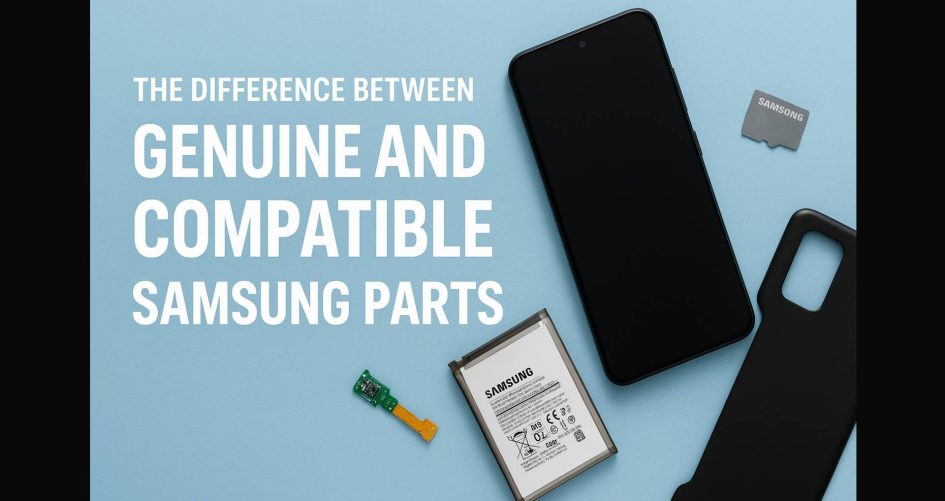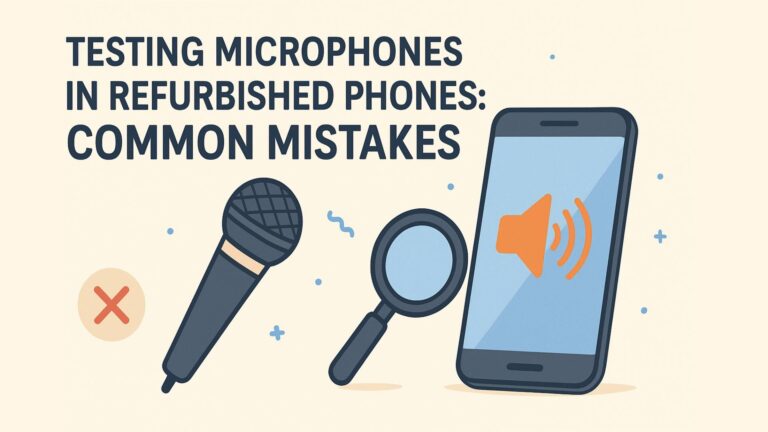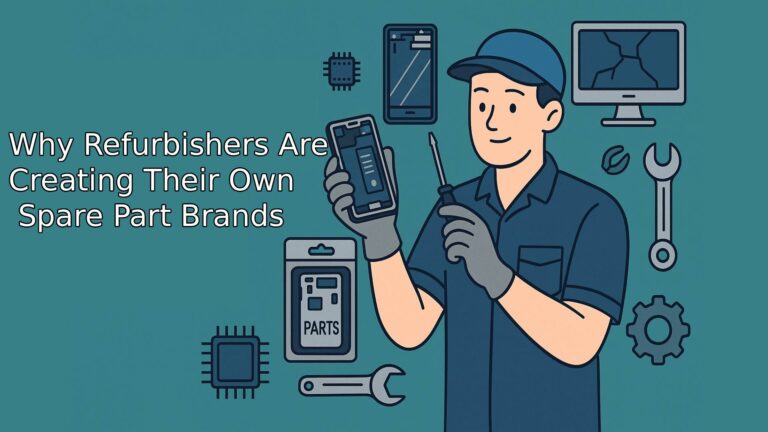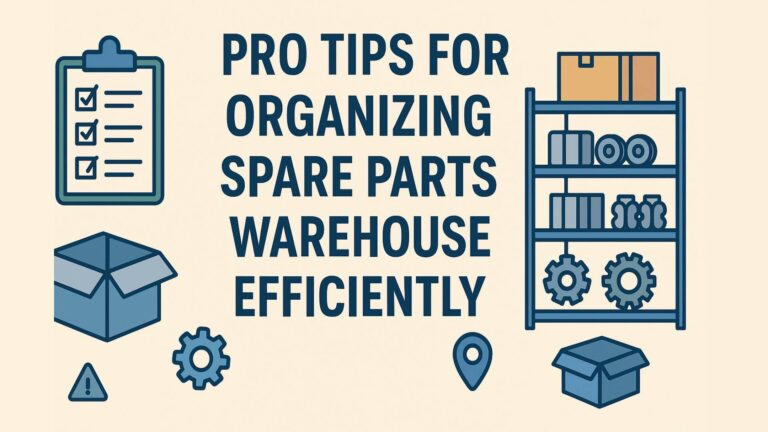When sourcing Samsung parts and replacement components, knowing the difference between Samsung OEM vs compatible, assessing spare part quality, and optimizing Samsung repair sourcing are critical. In this article, we’ll explain why choosing genuine Samsung OEM is often the smartest decision, how compatible alternatives compare in quality, and how to streamline your Samsung repair sourcing strategy. Know more.
1. Why the distinction between Samsung OEM vs compatible matters
- Samsung OEM vs compatible isn’t just marketing — it’s about origin. Genuine parts are manufactured or licensed by Samsung. Compatible parts are third‑party reproductions.
- With increasing repair demands, clear knowledge of spare part quality is vital.
- Effective Samsung repair sourcing ensures uptime, customer satisfaction, and fewer call‑backs.
2. What are genuine Samsung OEM parts?
- Genuine, factory‑branded Samsung parts come with original specifications, components, and performance guarantees.
- OEM parts include screens, batteries, cameras, charging ports, etc., each engineered to match OEM tolerances.
- Using genuine parts helps preserve device warranties and software compatibility.
3. What are compatible Samsung parts?
- Compatible parts are made by third parties—not Samsung—and mimic form, fit, and function.
- Some compatible parts perform well, but they vary widely in spare part quality.
- Sellers often use vague labeling (e.g. “high‑quality compatible”) making Samsung repair sourcing riskier.
4. Key factors when comparing Samsung OEM vs compatible
- Performance & reliability
OEM parts meet strict tolerances; they deliver Samsung‑level screen brightness, touch sensitivity, battery life, and camera fidelity.
Compatible screens may show color shifts, reduced brightness, touch lag. Batteries may undervolt or overheat.
Reliable Samsung repair sourcing relies on predictable OEM performance.
- Longevity & warranty
OEM components often carry official Samsung warranties or certified replacements.
Quality of compatible parts varies — some fail after weeks, others last months.
That variation harms spare part quality consistency, undermining business reputation.
- Software & firmware compatibility
Samsung devices often check for authentication. OEM parts pass these checks seamlessly.
Compatible parts can trigger error messages (“Device has been modified”) or firmware mismatches.
Smart Samsung repair sourcing avoids such pitfalls.
- Cosmetic & tactile finish
OEM panels match original color, brightness, glass quality, curves, and digitizer feel.
Compatible replacements may look cheaper, may not integrate perfectly, and wear prematurely.
- Source traceability & batch quality
OEM parts are traceable through Samsung’s supply chain.
Compatible parts vary by supplier: batch to batch inconsistency is common.
Maintaining consistency in spare part quality is easier with genuine parts.
5. When might compatible parts be acceptable?
- Non‑customer facing repairs, e.g. internal components not visible, may not require OEM.
- Budget‑sensitive projects, where cost is more important than longevity
- Well‑trusted compatible suppliers that provide certificates, batch testing results.
- Still, any use-case must weigh trade-offs in Samsung OEM vs compatible performance and risk.
6. How to evaluate spare part quality when sourcing
When assessing suppliers for Samsung repair sourcing, here are top checks:
- Test sample performance
- Request sample units before purchase.
- Compare brightness, touch responsiveness (screens), battery capacity and heat/wear (batteries), photos taken (cameras).
- Check return, defect & warranty rates
- Ask for data: percentage of part failures within 30/60 days.
- OEM parts usually have low (<1%) defect rates; compatibles vary widely.
- Supplier reputation & reviews
- Locate feedback about consistent quality, issue resolution, and customer support.
- In essence: trustworthiness predicts spare part quality.
- Certifications & compliance
- OEM parts have Samsung certification.
- Compatible suppliers may provide ISO 9001, CE, RoHS certificates.
- Confirm authenticity of certifications to ensure compliance.
- Batch testing & documentation
- Reputable suppliers log batch numbers, QC test results, lifespan tests.
- That transparency supports reliable Samsung repair sourcing.
7. Strategic benefits of sourcing genuine parts
When you commit to genuine Samsung OEM parts for your refurbishment or repair business, you unlock these benefits:
- Consistency: OEM parts deliver consistent visual, performance, and functional experience.
- Lower long‑term costs: Fewer installs, fewer repeat repairs, fewer unhappy customers.
- Higher trust: You can advertise “100% genuine Samsung parts” to enhance credibility.
- Warranty alignment: OEM parts may preserve or extend Samsung‑backed device warranties.
- Software friendliness: Samsung OS updates—especially Knox, FRP, and security—expect OEM components.
8. Cost comparison: Samsung OEM vs compatible
| Item | OEM Cost | Compatible Cost | Difference & Risk |
| LCD / Touchscreen | ~$80‑$120 | ~$30‑$60 | ~50–70% cheaper, but variable quality and yield |
| Battery pack | ~$30‑$50 | ~$15‑$30 | Half the price, but risk overheating, swelling |
| Rear camera module | ~$40‑$70 | ~$20‑$40 | Image quality, focus issues under low light |
| Charging / USB port | ~$15‑$25 | ~$5‑$12 | OEM more durable during docking cycles |
- OEM parts cost more upfront but reduce returns.
- Compatible parts may seem cheaper, but saving may vanish through re‑work.
- High defect rates affect client trust and dent long term profitability of your Samsung repair sourcing.
9. Best practices in Samsung repair sourcing
- Use tiered sourcing
- For visible, critical components, buy OEM.
- For internal, low‑risk components, verify high‑quality compatibles.
- Maintain clear inventory labeling
- Track stock as “OEM genuine part” vs “compatible part”—this supports quality control and transparency.
- Offer tiered service packages
- For example: “standard repair” with compatible parts, “premium repair” with OEM.
- Let customers choose based on price vs durability.
- Test and qualify suppliers continuously
- Retest compatible supplier batches every few months.
- Keep records of defect rates and update sourcing decisions accordingly.
- Stay current with Samsung updates
- Samsung occasionally validates hardware changes in newer updates.
- Keep informed to avoid compatibility issues, something critical in both Samsung OEM vs compatible evaluation and sourcing.
10. SEO & marketing leverage
When promoting your refurbished mobile wholesale site or repair services, use keyword‑rich phrases that resonate:
- “We use only Samsung OEM vs compatible screening to guarantee high standards.”
- “Our emphasis is on spare part quality: genuine parts backed by batch testing.”
- “Transparent Samsung repair sourcing means predictable results and excellent margins.”
This will help Google index your pages effectively by matching search patterns used by industry buyers and repair professionals.
11. Real business case scenarios
Scenario A: Premium refurbishment line
- Use genuine Samsung OEM screens, batteries, cameras.
- Offer “certified refurbished” devices with warranty.
- Customers see fewer issues, enjoy better device resale value.
- You can market with confidence: “Samsung OEM vs compatible difference matters — we choose OEM.”
Scenario B: Volume low‑cost churn repairs
- Use compatible parts where acceptable (e.g. pop‑outs, some internal modules).
- Keep a small OEM inventory for high‑visibility components.
- Monitor returns closely; switch suppliers if defect rate >3%.
12. Summary: deciding between Samsung OEM vs compatible
- The debate gets boiled down to spare part quality, reliability, and long‑term costs.
- Genuine Samsung OEM parts provide consistent performance, better durability, and better update/security compatibility.
- Compatible parts can fit budget‑driven operations, but demand rigorous quality checks.
- Smart Samsung repair sourcing combines careful part selection, supplier validation, and transparency.
13. Final thoughts: your next steps
- Audit your current Samsung parts inventory. Label each item as OEM or compatible.
- Run a supplier survey or feedback request: defect rates, testing protocols, certifications.
- Run side‑by‑side comparisons—OEM vs compatible—so you can quantify performance.
- Use your findings in marketing: “X% fewer defects”, “OEM parts only in premium tier repairs”.
- Maintain a living policy: update sourcing guidelines with new suppliers, results, Samsung updates.
Conclusion
The difference between Samsung OEM vs compatible parts is not just branding — it’s the difference between predictable quality and variable results. For high spare part quality, durable repairs, and stellar customer trust, genuine Samsung parts often make sense. That’s why smart businesses focus their Samsung repair sourcing strategies on traceable, certified components. Done well, you’ll reduce re‑work, boost margins, and build a reputation for excellence. Know more.





